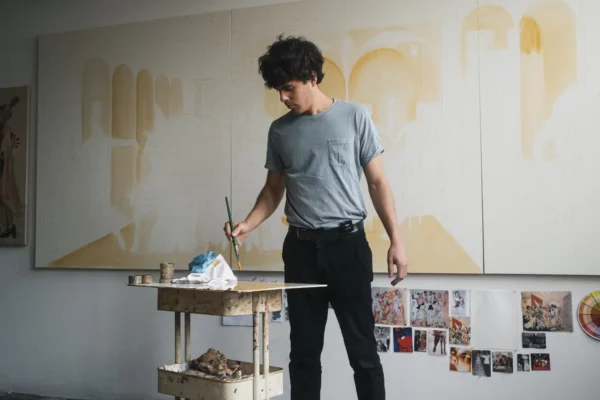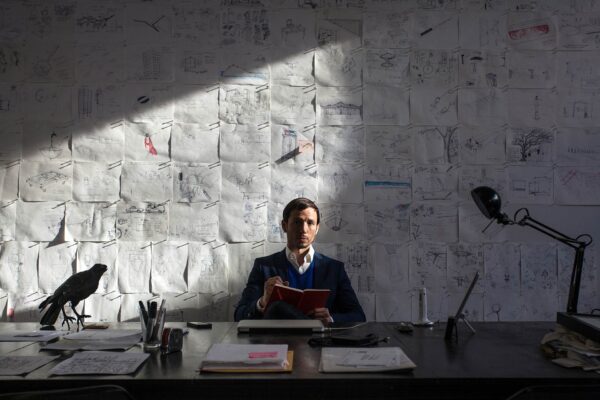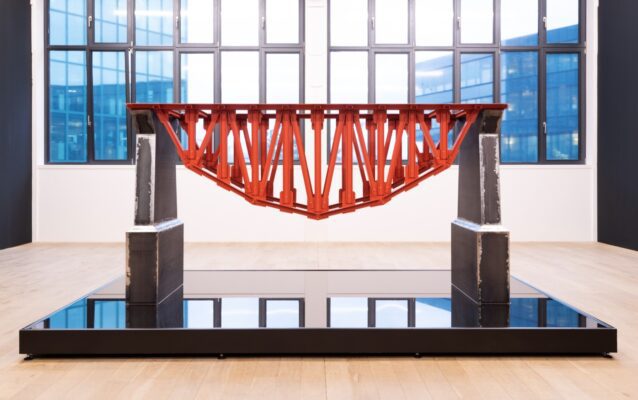
Paraiso exhibition entrance.
COFFEE WITH
IN CONVERSATION WITH CREATIVES AT CONCORDIA: “CONNECTION IS THE ONLY WAY FORWARD”
Who: Danielle Juliao, Salomé Coronel, Maria Elena Valdés, Alex De La Torre, Rodrigo Chapa
What: Paraiso presented by Concordia Art Show
Where: New York City
Why: In support of Latin American artists
Instagram: @concordia.nyc
LATINNESS: What sparked the idea for Paraiso?
DANIELLE: The idea for this exhibit came about very organically. I started working on it this April, when I was questioning which route I wanted to take as a creative and, after 4-5 years of working with clients and having done zero personal projects, I decided it was time to work on something that truly felt personal, and that could only be done through the arts.
With Paraiso, I wanted to celebrate my region and bring a bit of its warmth to the city I’ve lived in for almost a decade– New York. The resourcefulness, the vibrancy, the mysticism– I wanted to portray a Utopian Latin America. That feeling of richness despite its deficiencies and ambivalences. It is an exploration of recurring Latin American motifs that make our region dreamy, joyous, ambivalent and a little absurd.
I first worked on the concept visually, and then drew a conclusion from the final curation of works. Paraiso was the result of a juxtaposition between each of the artists’ unique backgrounds, contexts, and subject matters. The works fed off of each other and each individual piece brought something entirely different to the table.
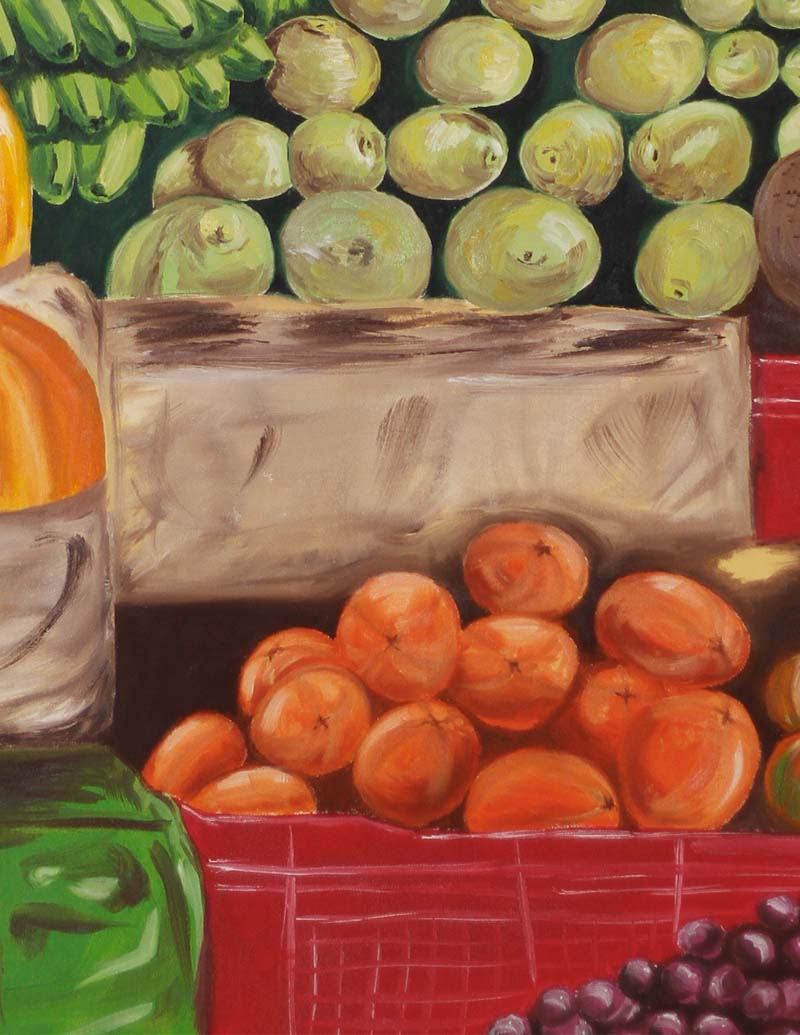
Detail “Paloquemao”, Salomé Coronel.
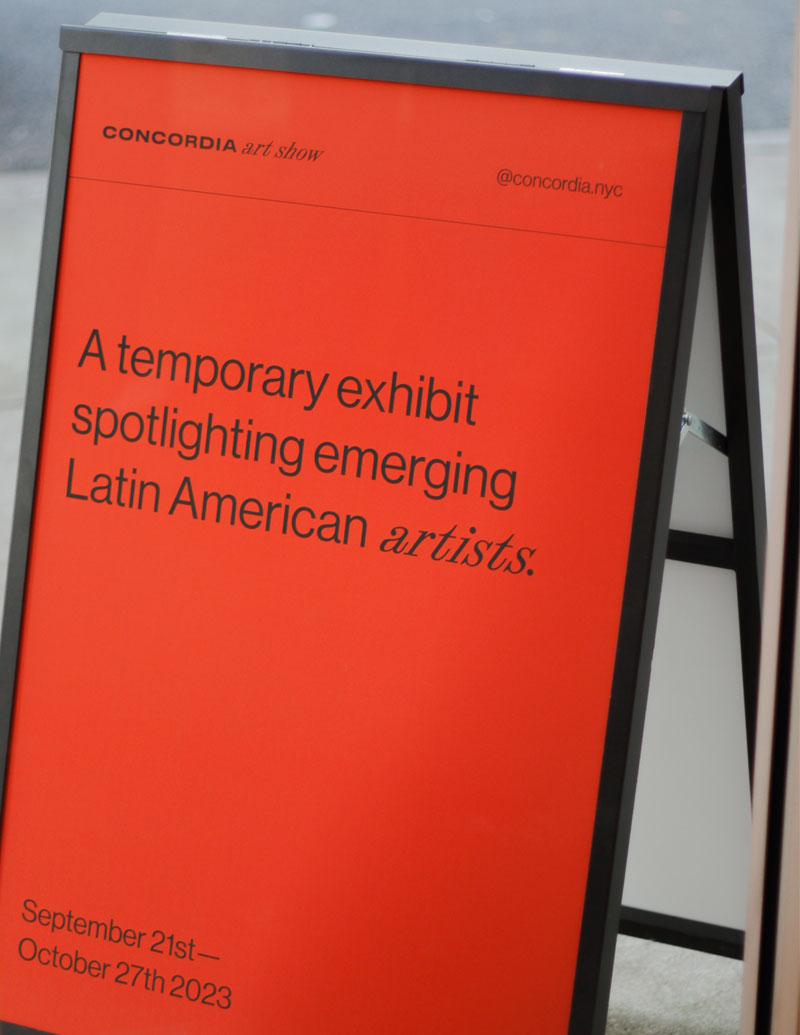
LATINNESS: Your previous work has centered around fashion. How does that tie into your work with Concordia Art Show?
DANIELLE: Working in fashion has always been hybrid and tailored to each project. I’ve been asked to take care of many different aspects: production, copywriting, web development, brand building, art directing, which has strengthened my communication skills, resilience, and ability to look at projects from a multidisciplinary perspective.
Fashion also constantly requires looking for references outside of fashion, and I have gravitated towards finding mine in fine arts ever since I can remember. There is also a meaningful overlap of creatives who work in fashion and fine arts. Through the industry, I have met incredible collaborators and artists that are also an essential part of this first edition.
All of the commercial and editorial projects I have worked on have definitely led up to me feeling prepared to handle such a big project as I consider Concordia Art Show to be.
LATINNESS: In your opinion, what’s the role of an artist today? And a gallerist?
DANIELLE: Artists interpret the culture, and through their work, open up a window for us to see how they personally process these realities. Thanks to them, current spectators or future generations can look back at this time and have different ways of understanding what was happening in this particular moment.
I cannot speak from a traditional gallerist’s perspective, but from my experience, a gallerist or art dealer is an essential advocate of artists. A gallerist has the key to open up the space for beauty, talent, empathy and depth, and to me, celebrating these four elements can help the human condition thrive. Gallerists should always showcase artists and works that they love and believe in.
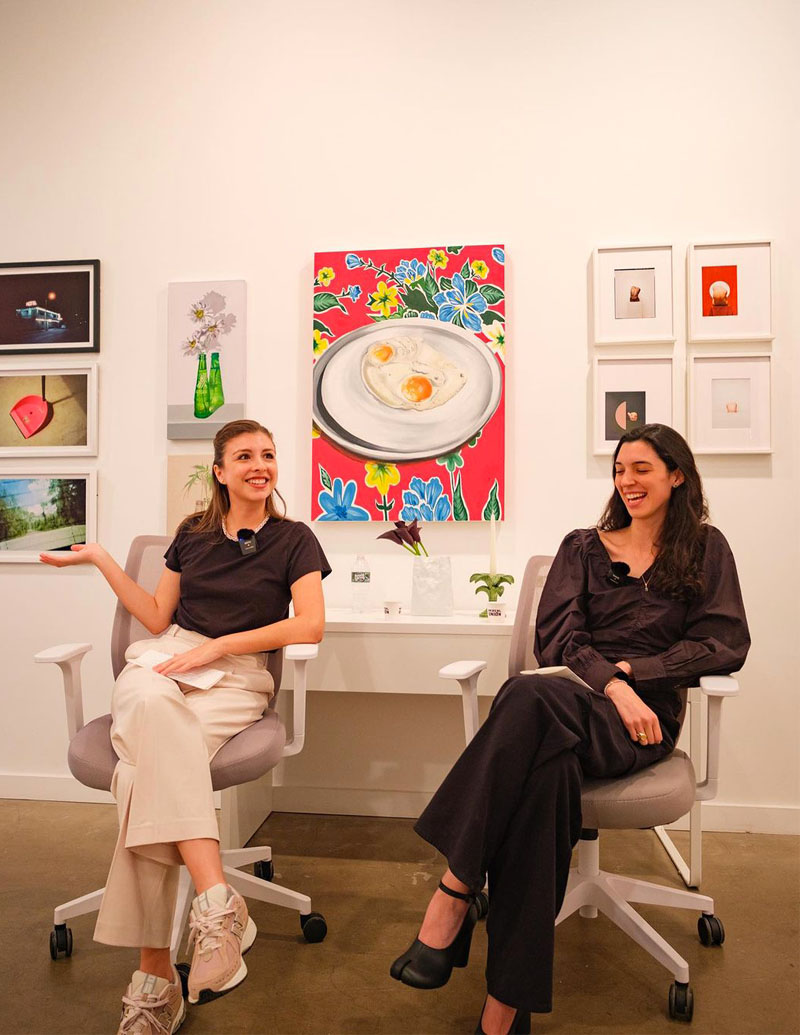
Aida Valdez and Danielle Juliao.
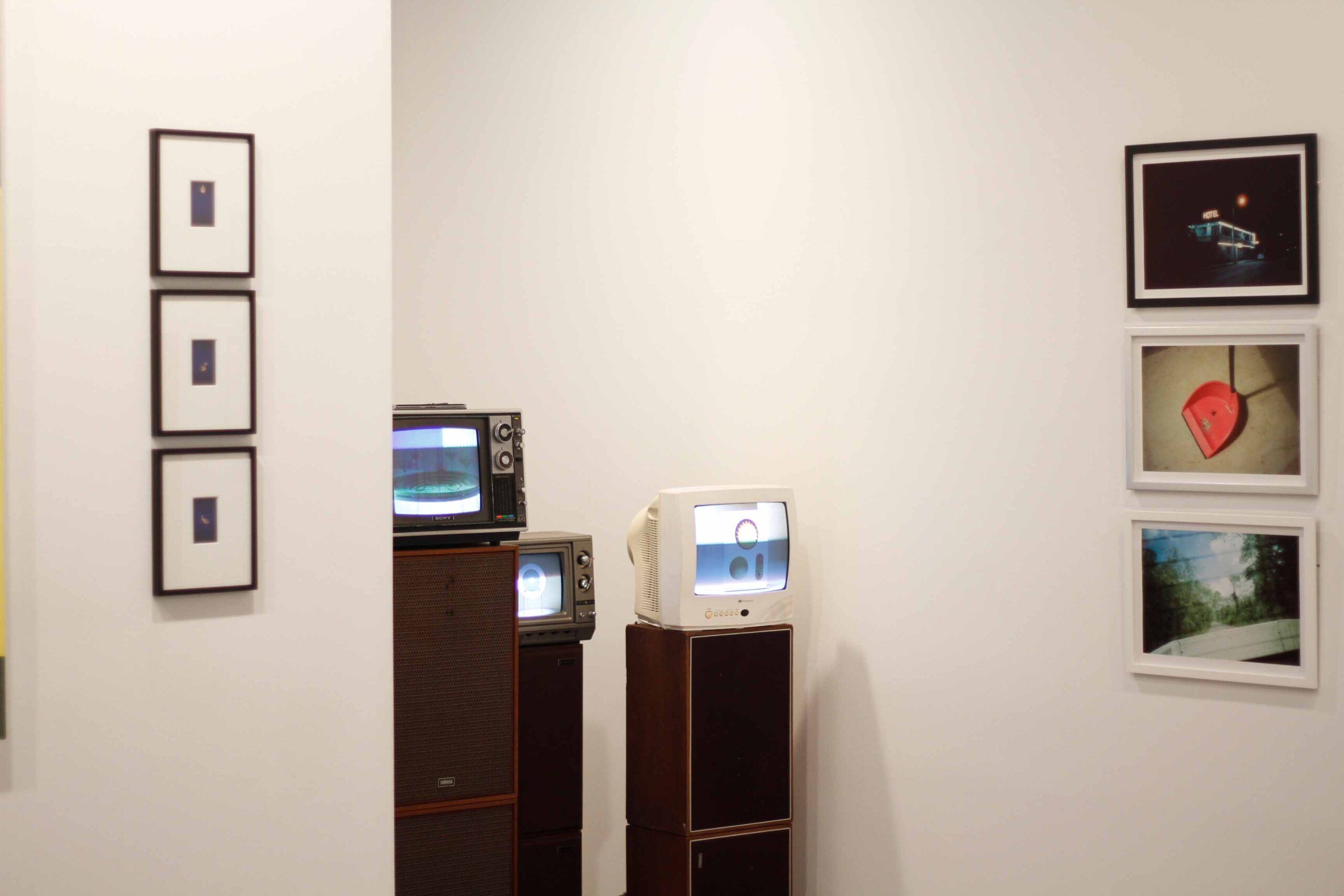
Paraiso exhibition installation view.
LATINNESS: Why is it important to support emerging artists, in Latin America, or elsewhere?
DANIELLE: Emerging artists need people to support them and believe in them before they take off because it is the only way that they can continue their artistic practices. Without ‘early adopters’ or collectors that choose to support them, it is very hard for an emerging artist to position themselves– be it because of lack of visibility, resources or motivation.
When we see emerging talent and projects that we resonate with, it is our duty to support it so that the creation continues.
LATINNESS: The world is in a weird place right now. How can art help in times like these?
DANIELLE: Art creates community and community creates honest conversation. That is what we need at this time– safe spaces to communicate with people who believe empathy and connection is the only way forward.
LATINNESS: What’s one thing you want people to know about Latin America that you hope to communicate through this project?
DANIELLE: That in our region, there is still so much ‘undiscovered’ talent that has yet to be celebrated by the world.
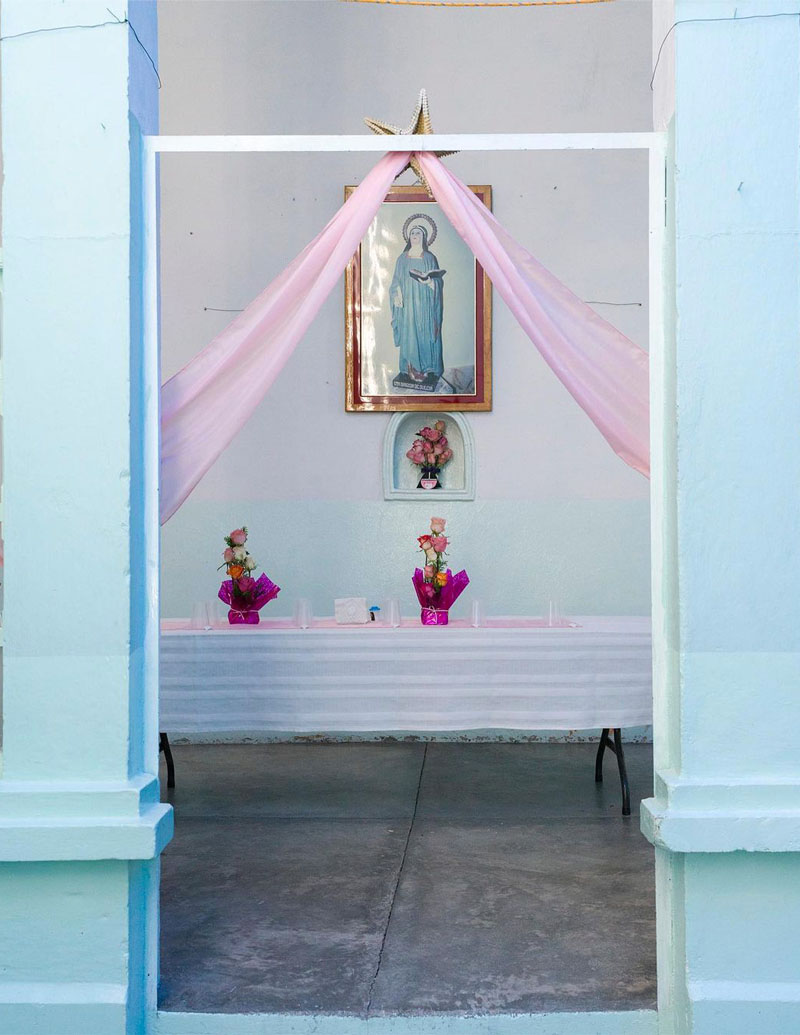
“Claustro”, Maria Elena Valdés.
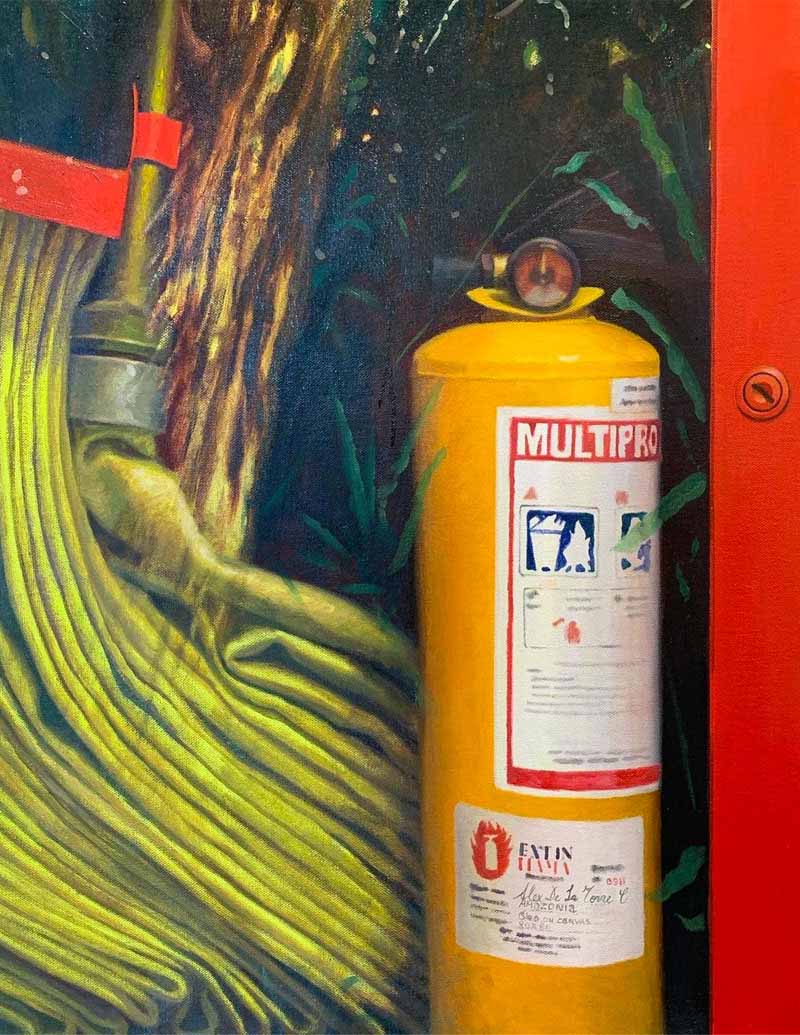
Detail “Amazonía”, Alex De La Torre.
LATINNESS: How did you select the artists?
DANIELLE: Each of these artists brings something different to the table, and I have been following their bodies of work for some time now. We have a personal relationship and being familiar with their backgrounds and subject matters has given me the chance to assemble them in a way that gives the viewer a glimpse of what I consider Paradise, or Paraiso – the name of the group exhibition.
Rodrigo (Monterrey, México) with his photography series ‘Episodios’, ‘Ausentes’, ‘Caída Libre’ and motion graphic installation ‘Aparatos’, studies the psychology of color, movement, light, and newfound exploration of sound.
Salomé (Quito, Ecuador) gives us a glimpse of her move to Bogotá, Colombia after years of living in New York, with her series of oil still lifes in ‘No es un año más’.
Maria Elena (Puebla, México) brings depth to the concept of isolation in both of her photo documentary series ‘Claustro’ and ‘Diario de Pandemia’.
Alex (Barranquilla, Colombia) showcases the symbology of the Caribbean tropics through his hyper realist fridges, branded soda bottles, and fire extinguishers in ‘Sinestesia’, ‘Solitarios’ and ‘Amazonia’.
LATINNESS: How has community played a role in your career?
DANIELLE: Community has been essential – especially the Latin community. Being from Colombia, I have naturally ended up connecting with many other Latin creatives throughout my career. These friendships keep me grounded, motivated and inspired.
I also made a point of involving them in some way or another in the making of Concordia Art Show, because there is nothing better than collaborating with people whom I trust and admire.
Concordia Art Show has also allowed me to open up the space for the community. I have met incredible collaborators, collectors and artists during every activation. It is incredible how art connects.
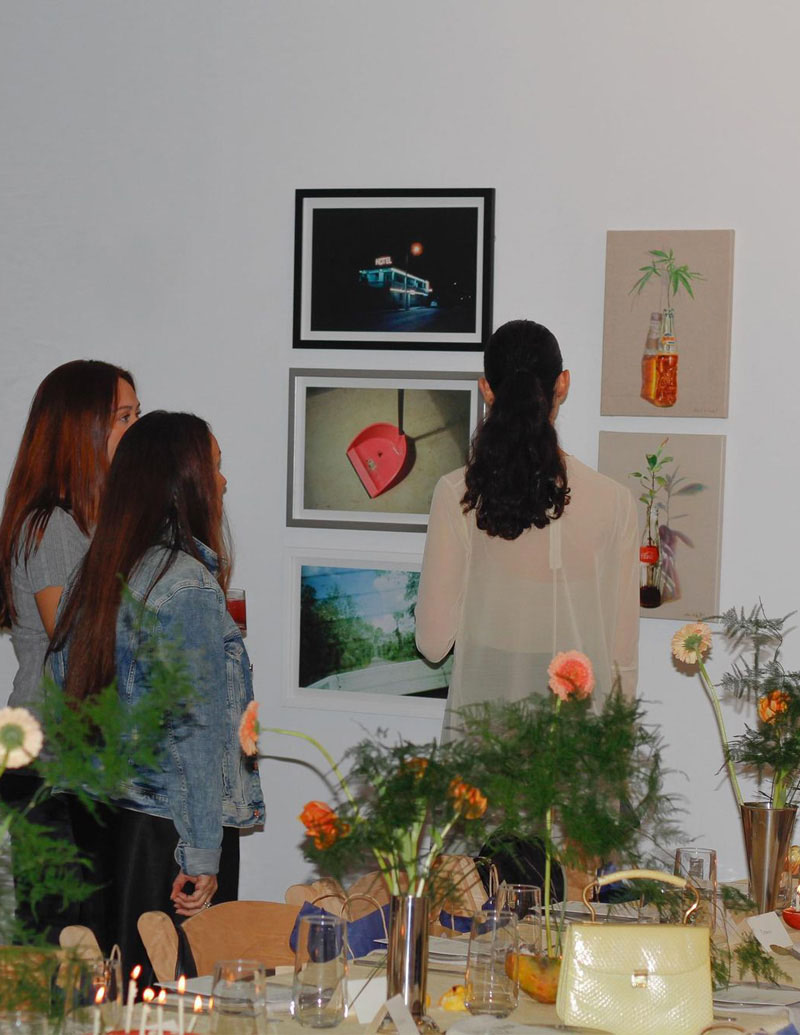
LA ÚLTIMA CENA. Paraiso exhibition closure.
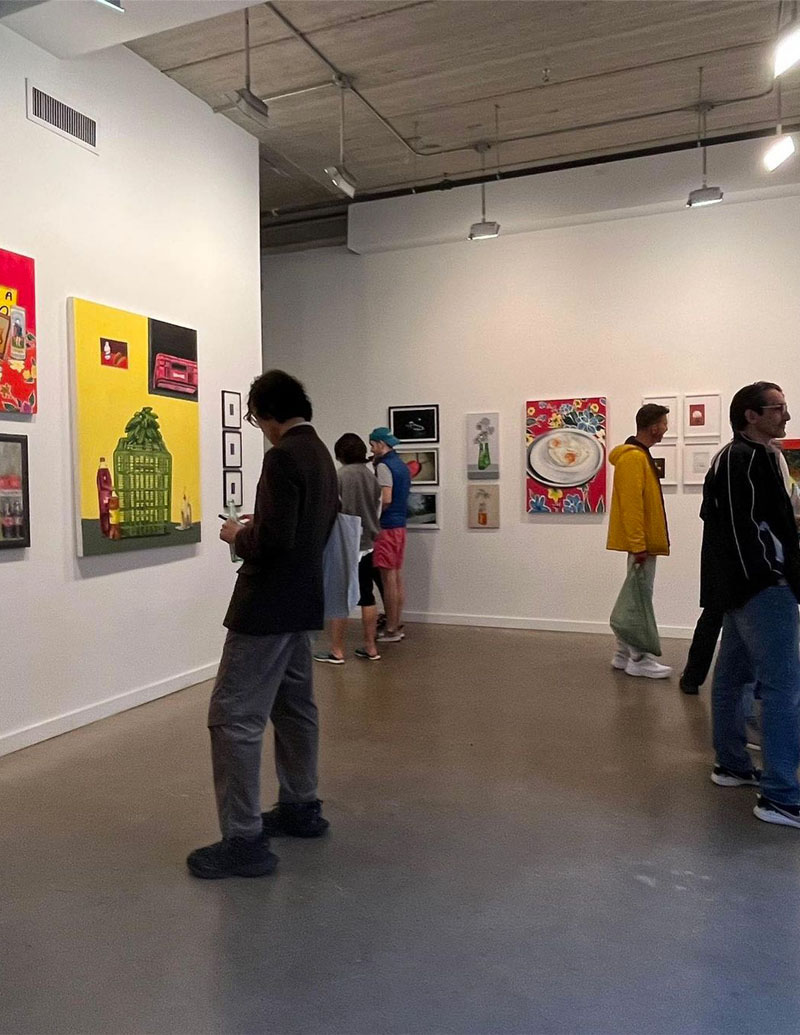
Paraiso exhibition installation view.
LATINNESS: What’s been the main takeaway from this experience? Did you receive the response that you were hoping for?
DANIELLE: There is a curiosity and recognition of our community’s potential, coming from bigger players and even the mainstream. This is something that is undeniably positive and worth celebrating, as it means that new opportunities and spaces are emerging for young Latin artists to create, showcase and sell their work.
The response was moving and I think it was even more than what I hoped for.
LATINNESS: Salomé, your artwork focuses on the mundane. What do these objects you feature in your still lifes say about your culture?
SALOMÉ: For me objects serve as symbolic embodiments of our culture, reflecting the very essence of our Latin American identity. They articulate the intricate workings of our society, encapsulating the core of our interactions and the tapestry of our traditions. When we engage with these objects, they resonate within us, evoking both sensory and nostalgic impressions. Think of that indescribable emotion experienced when, after an extended absence, you stumble upon a “bombombum” or “Postobon” in a foreign supermarket – that ineffable sentiment is what I aspire to capture in my artwork. This sentimental connection we share with items that have woven themselves into the fabric of our lives from the earliest recollections is profound.

Detail “La bodega”, Salomé Coronel.
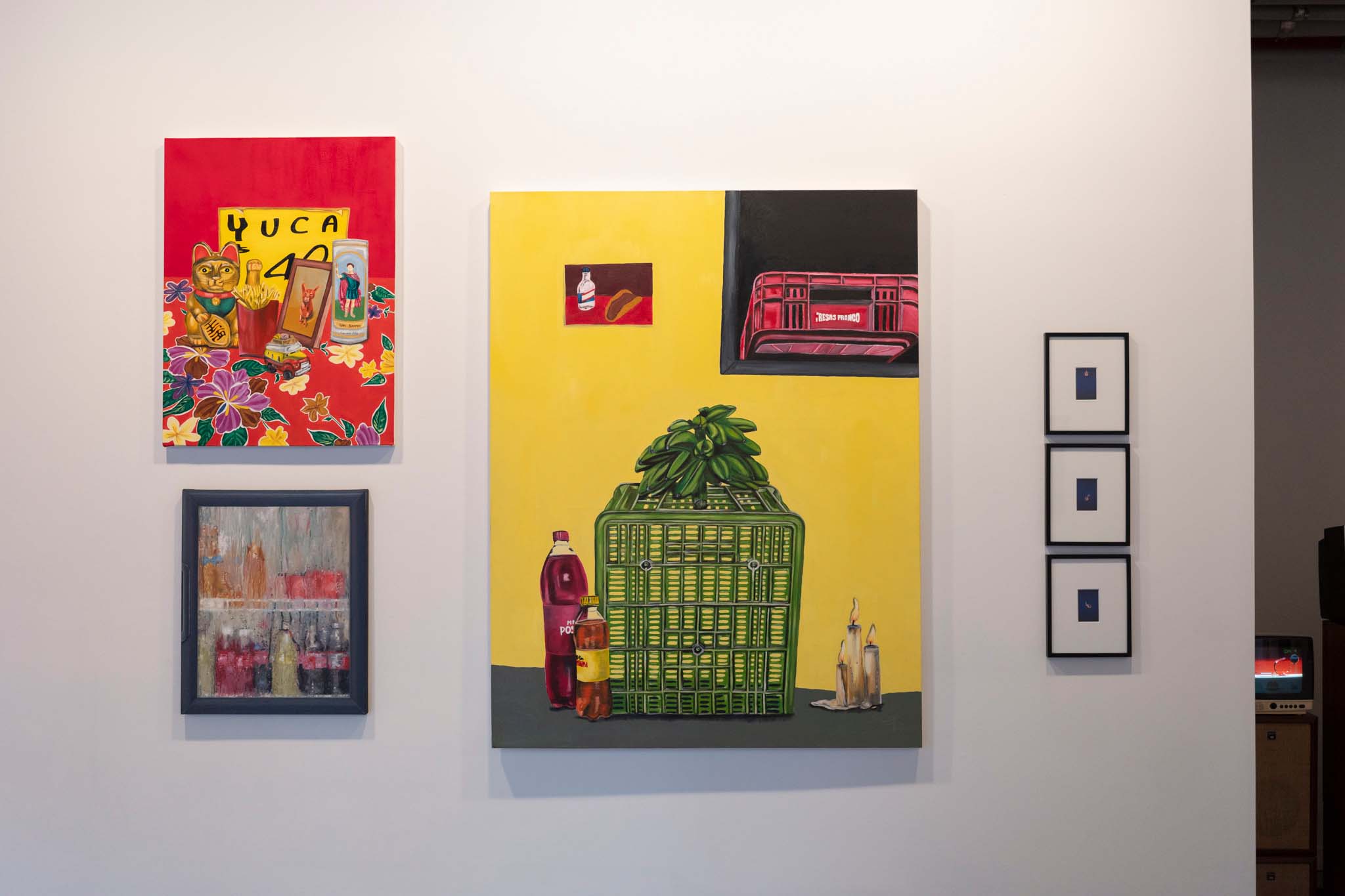
Paraiso exhibition installation view.
LATINNESS: How does your work as a product designer inform your art? And vice versa?
SALOMÉ: My journey as a product designer significantly influences my artistic endeavors, particularly in the exploration of materials. This exploration compels me to traverse the everyday landscapes of our urban existence: the bustling marketplace, “la tiendita”, and other scenarios often overlooked due to the constraints of our daily routines. In colloquial terms, we might say, “ir pa la calle.” My aspiration is to connect with this quintessential facet of our culture, which I fondly refer to as the pillars of our society, and to showcase it to the world through my art.
My art strives to convey the vibrancy of our Latin American environment, encapsulating the rich spectrum of colors, textures, materials, and the exquisite diversity of our culinary offerings. It encapsulates the delightful chaos that defines our surroundings. Much like the creative process in product design, where we harness an array of ideas and nimble problem-solving abilities, our unique Latin American perspective continually inspires our capacity to reinvent and adapt to any environment. I’ve always said, “The Latin American mind has a unique capacity of reinventing and readapting itself in any environment like no other.” I firmly believe this is why we possess the remarkable ability to appreciate the beauty in the mundane aspects of our lives and express this appreciation through various mediums.
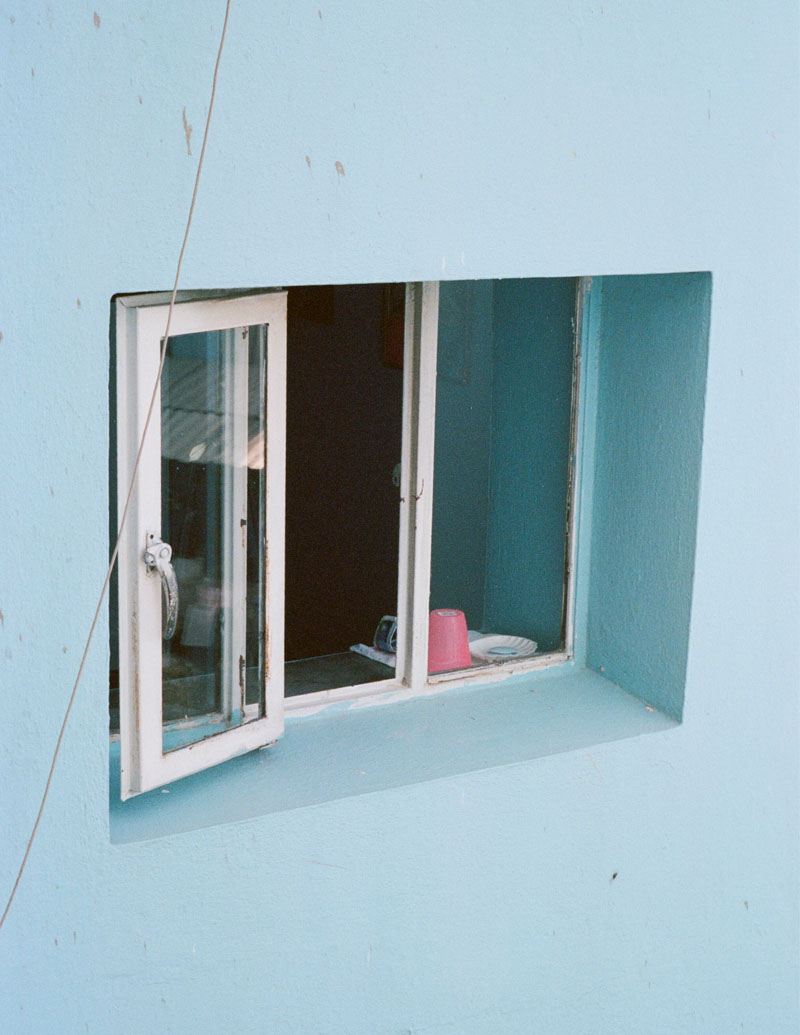
“Claustro”, Maria Elena Valdés.
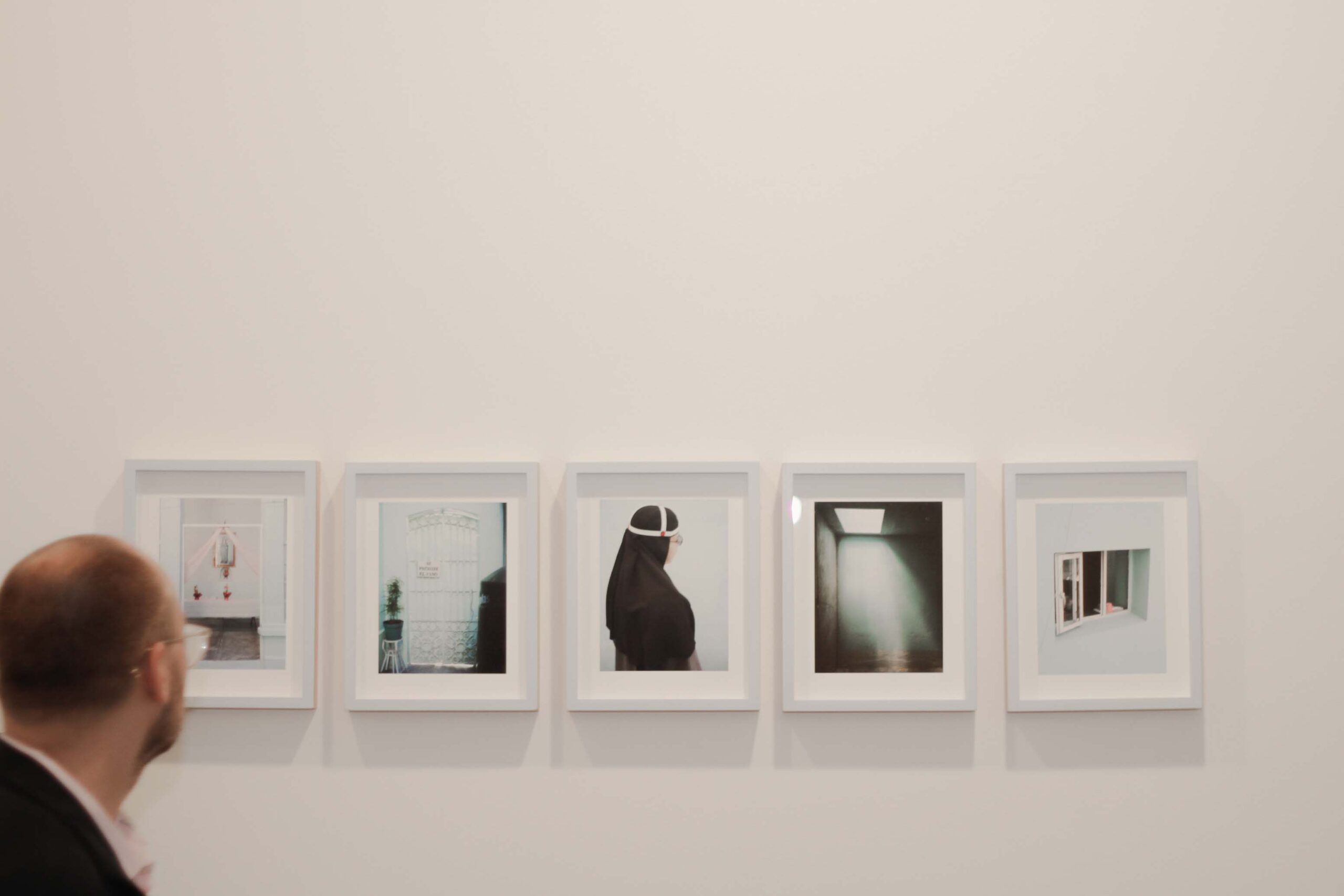
Paraiso exhibition installation view.
LATINNESS: Maria Elena, how do you choose your subjects? What does your process look like?
MARIA ELENA: My personal work comes from pure curiosity. It usually starts with a subject or a color that resonates at a personal level. It deals with my own identity exploration.
I’m all about storytelling.
My years as a photo producer gave me a lot of structure. Once I find a subject, I see my camera as an ally that enables the study of my subjects.
During the editing, I use the images like puzzle pieces, this allows me to build and tell the story I’m going for.
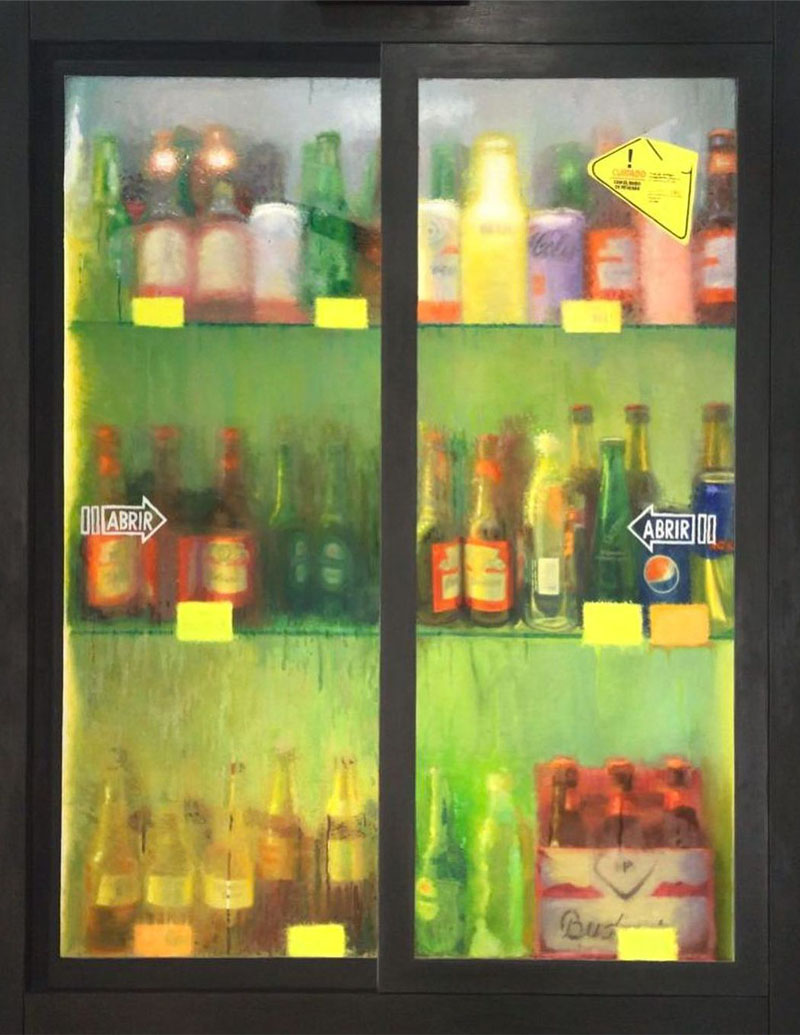
“La Nevera”, Alex De La Torre.
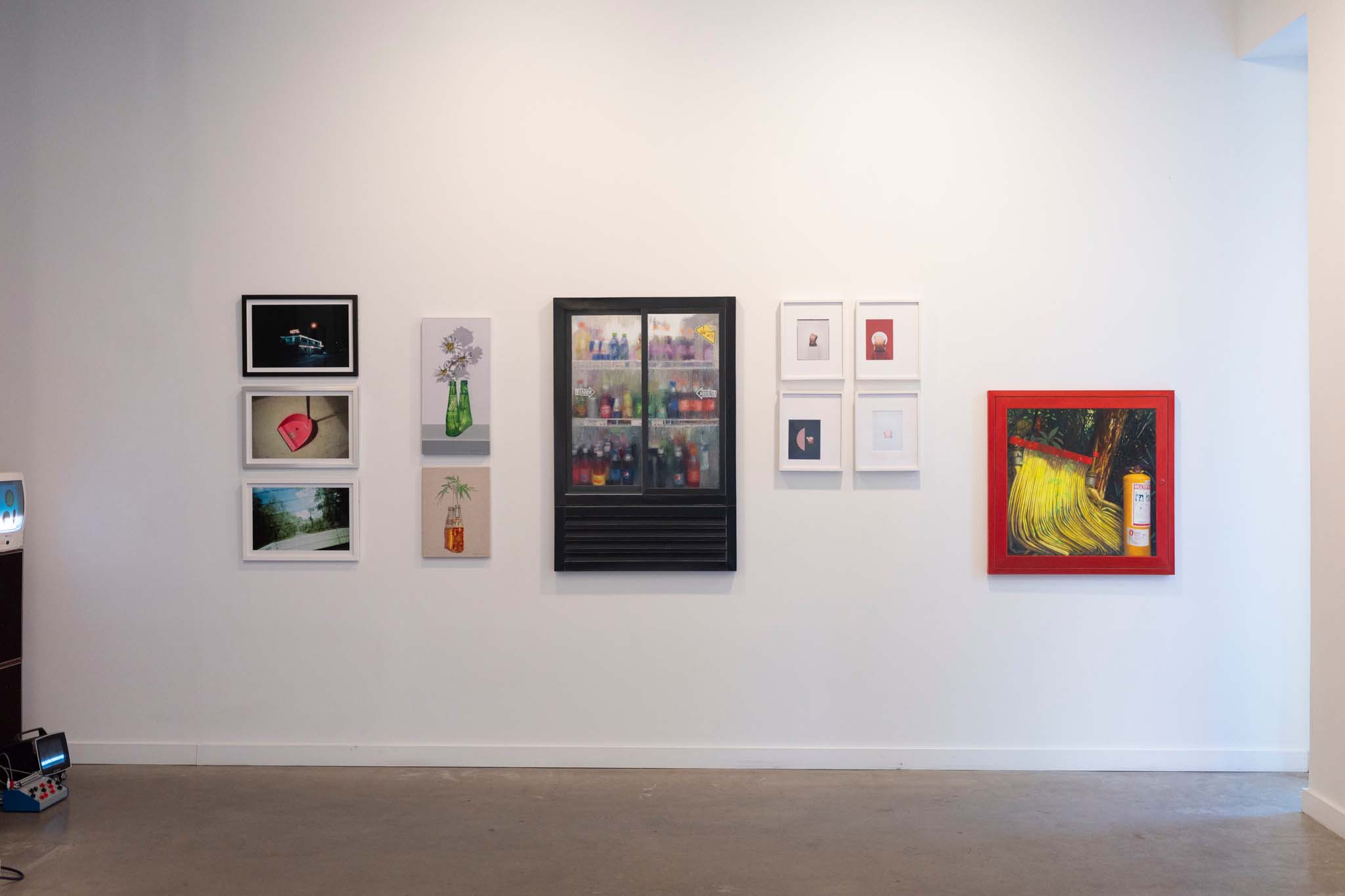
Paraiso exhibition installation view.
LATINNESS: Alex, you worked with two great Latin American masters. How did these experiences help shape your art?
ALEX: Having the opportunity to assist Maestro Haime Álvarez Correa in his studio allowed me to understand the creative process from a very different perspective from that of books. Seeing how, through playfulness, he gave shape to his ideas was revealing. Witnessing these routines, in the midst of conversations about art and culture, allowed me to develop the habits that today accompany me in my creative process, where intuition and playfulness coexist as the main elements in each of my works. In general, I work in series, since while I execute them, new variants emerge that only stop when new ideas completely absorb my attention.
LATINNESS: How does the new generation differ from previous generations?
ALEX: Each generation of artists is a witness of its own time. We learn from the past, we absorb and apply all that the present offers us, and as artists, we dream and shape proposals that seek to satisfy the creative appetite, in the hope that a future generation will understand and value our ideas, concerns and passions.
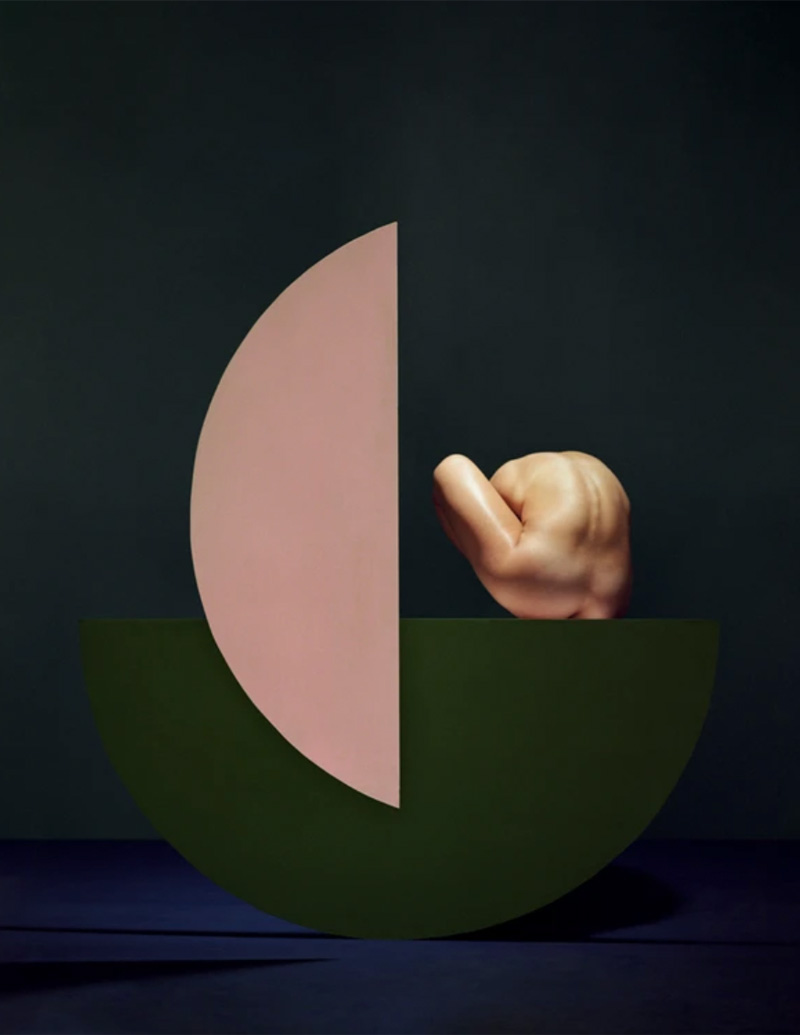
“Seashell Pink / Blackish Olive”, Rodrigo Chapa.
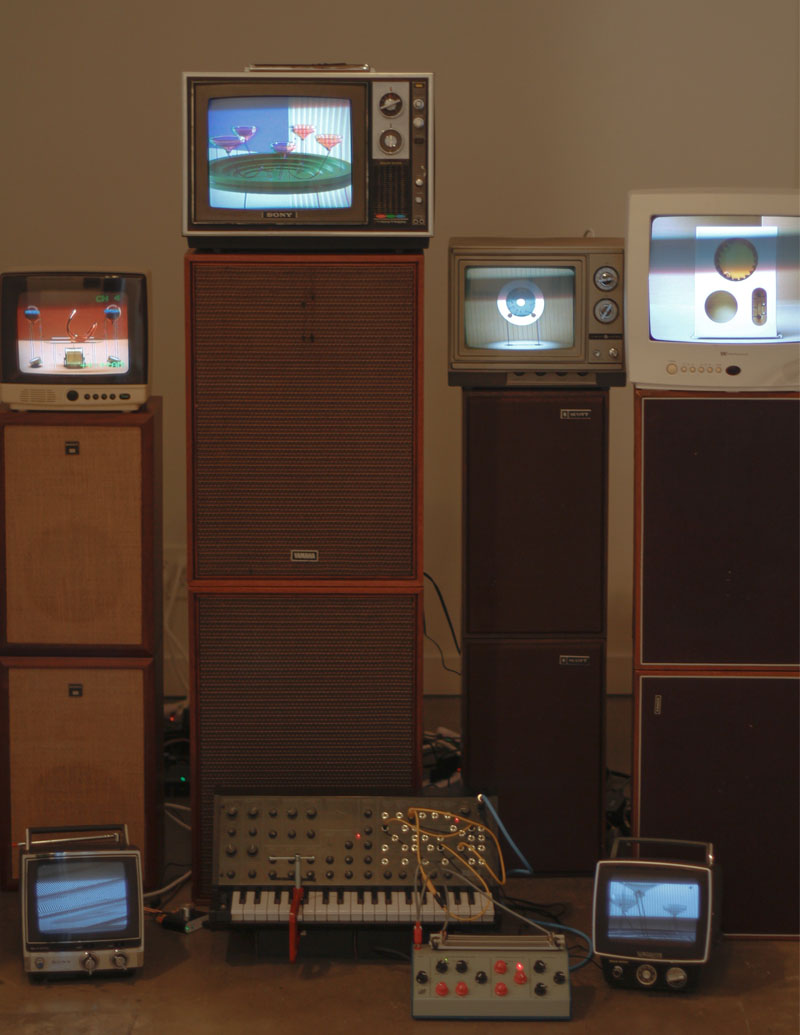
“Aparatos”, Rodrigo Chapa.
LATINNESS: Rodrigo, color plays a prominent role in your work. How has your culture informed your affinity?
RODRIGO: I was raised in a very colorful environment, almost chaotic. Also, I was born with a very particular color sensitivity. There are some funny stories my mom tells about me as a kid. When I was 4 or 5 years old, for example, she said I wouldn’t leave the house if my shoes and my shirt weren’t the same color. I even remember not being happy if they were different shades of the same color. I remember liking colorful clothes, sometimes I thought the clothes they made for girls were better for that reason.
I started photographing in black and white because I felt I didn’t know how to use color, I felt like I had to study it before using it. So I did, I bought as many books as I found right after photography school and years later I started using color, I tried all the rules, I tried breaking them and making my own too.

